Safe Hair Dyes for Allergy Sufferers (PPD-Free and Hypoallergenic)
Updated on
This post may contain affiliate links. As an Amazon Associate, we may earn from qualifying purchases.
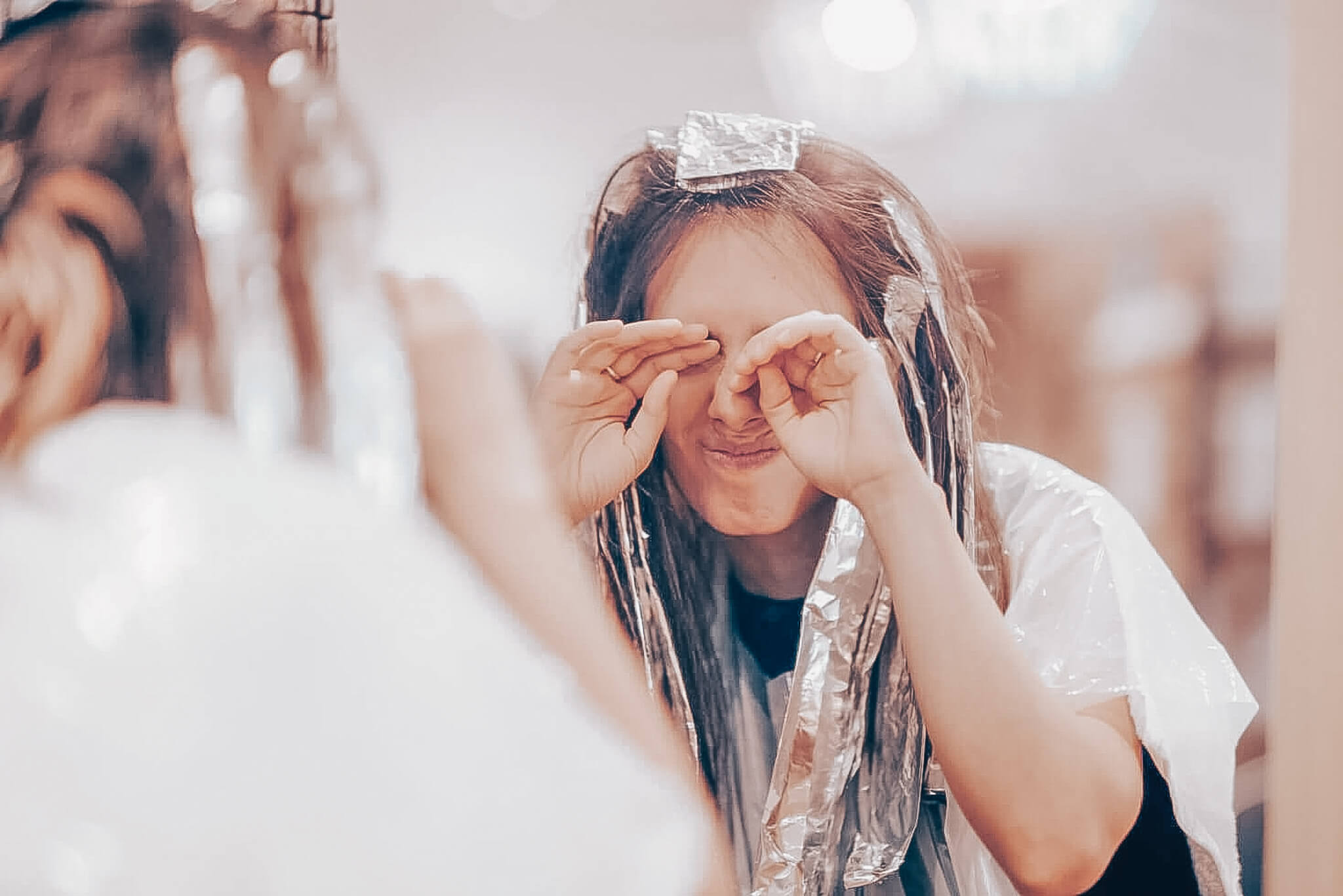
From a ballooned-up face to even going into an anaphylactic shock, hair dyes can cause serious allergic reactions due to oxidizing agents, sensitizers, preservatives, and alcohols, amongst many other chemicals used in their formulations.
If you want to color your hair but suffer from allergies and you’re not sure what to avoid in a hair dye, this article will help you identify the main culprits and pick the right one.
We’ve pulled together a list of safe hair dyes for allergy sufferers by eliminating those that contain PPD, ammonia, resorcinol, lead acetate, formaldehyde, sensitizers, and sulfates to name a few.
Safety Information:
Please read the safety information on the product and perform a patch test 48 hours before use.
Even products that are safe to use require patch testing. So do not skip this step.
Note: Some hair dyes come with a Developer/Activator. Make sure you also test the Developer.The purpose of this article is to provide useful information and resources we have gathered. We do not intend for the material here to be a substitute for professional medical advice, diagnosis, or treatment. It is important that you assess all details and conduct additional research as needed before making decisions.
Here are the top 3 to start with:
We may earn a commission from the links below.
What Chemicals Cause Allergic Reactions In Hair Dyes?
Allergic reactions to hair dyes are caused by oxidizers, preservatives, and alcohols. For example, PPD (para-phenylenediamine), ammonia, hydrogen peroxide, and lead acetate are the most-documented irritants and allergens. [1]
Oxidizers are used to help the color develop, penetrate, and stick to the hair shaft so that it can last longer. When partially oxidized, some ingredients, like PPD, can develop into sensitizers, thus triggering contact allergies. [2] That’s why most products containing PPD or its derivatives carry warning signs on the packaging to do patch testing before using the product.
Preservatives and alcohols are used to prevent the growth of bacteria and mold while keeping the product stable and effective for longer periods of time.
Read: List of toxic ingredients in hair dyes to avoid.Speaking of irritants and allergy triggers, PPD has been banned in certain countries because of its severe allergic reactions. Sweden, France, and Germany are among the European countries that have put a red flag on PPD as an unsafe cosmetic component. [3]
What Type of Reactions Can Hair Dyes Cause?
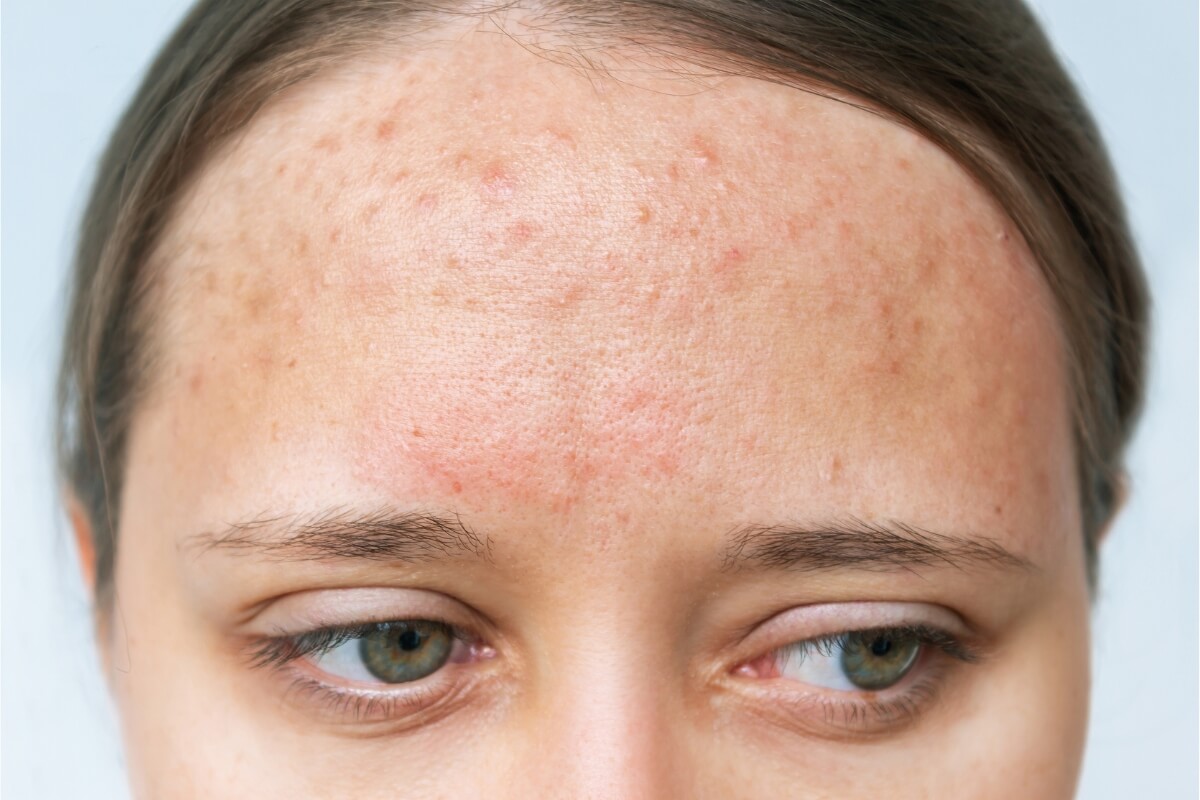
Hair dyes can cause a variety of reactions, ranging from mild localized irritations to more serious allergic reactions.
In some cases, people may experience redness, swelling, or itching on the scalp or on the forehead. Others may develop a rash or hives on the face, neck, or ears. These types of reactions are classified as contact dermatitis.
In rare cases, hair dyes can cause a more serious allergic reaction known as anaphylaxis, which can be life-threatening. [4]
Contact Dermatitis
Contact dermatitis is a type of skin irritation that occurs when the skin comes into contact with certain substances. In the case of hair dyes, contact dermatitis can be caused by the chemicals in the dye, such as colorants or preservatives.
Symptoms of contact dermatitis from hair dye may include redness, swelling, itching, and dry, flaky skin on the scalp or other areas of the skin that came into contact with the dye. You should stop using the product and consult a doctor if you think you may have contact dermatitis from a hair dye. They can help determine the cause of your symptoms and recommend the appropriate treatment.
Here is a list of common symptoms to watch out for:
- Burning sensations
- Dry skin
- Itchy scalp
- Scalp psoriasis
- Redness
- Inflammation
- Dermatitis
- Flaking
- Swelling
- Puffiness
Applying hair dye to the hair will inevitably transfer to the scalp. An overwhelming feeling of itching and burning is one of the most common reactions many women with sensitive skin may experience.
Related: How to prevent your scalp from itching after hair dye.During most severe reactions, people experience dizziness, trouble breathing, as well as nausea.
Anaphylaxis
Anaphylaxis is a serious and potentially life-threatening allergic reaction. It can be caused by a variety of substances, including certain chemicals in hair dyes.
Symptoms of an anaphylactic shock may include difficulty breathing, swelling of the face, lips, or tongue, dizziness, rapid heartbeat, and loss of consciousness.
If you think you or someone else is experiencing anaphylaxis from a hair dye, it is important to seek emergency medical treatment immediately. Anaphylaxis can be treated with a shot of epinephrine, which can help reverse the allergic reaction symptoms. [5]
Can Allergic Reactions Be Prevented?
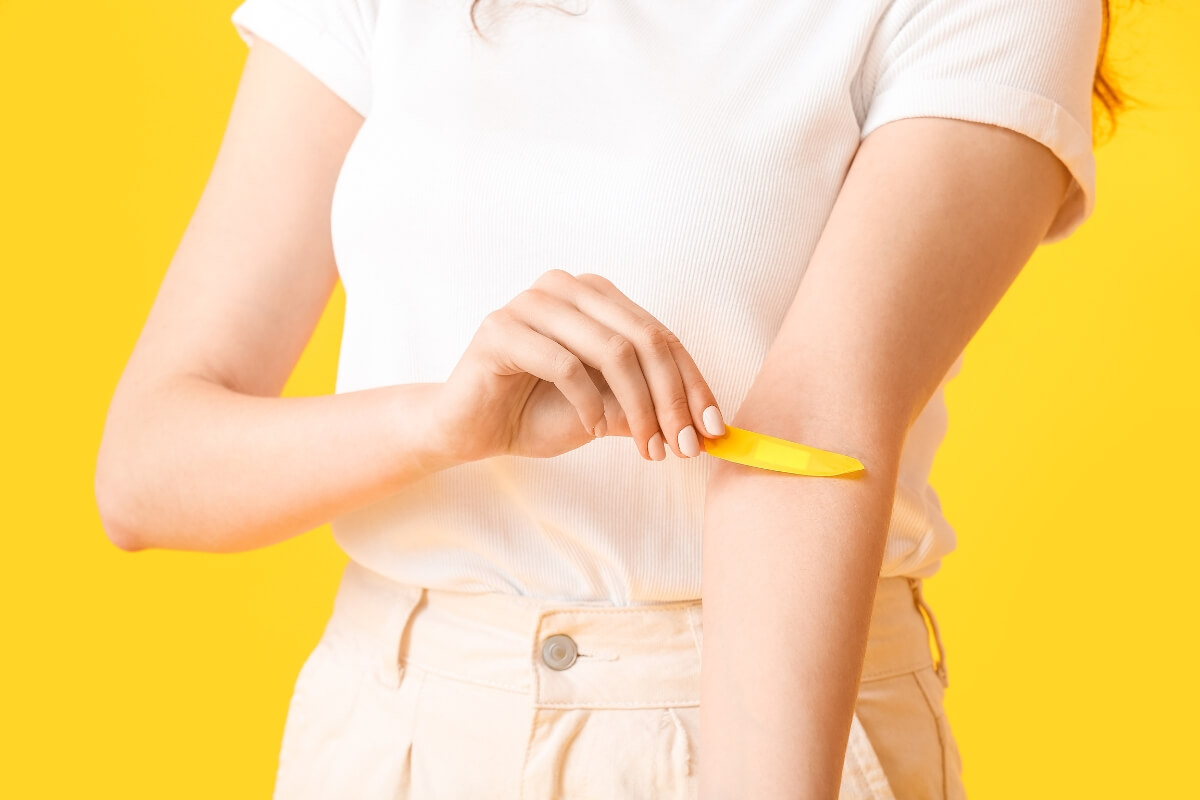
Make sure you also patch test with the Developer/Activator.
Most allergies can be prevented and can be kept under control. When it comes to hair dyes, allergic reactions can be halted beforehand, hence the patch test.
The importance of patch testing lies in determining and ultimately preventing allergic reactions before applying a product to your whole head.
The Importance of Patch Testing Hair Dye Products
A small patch test can reveal a severe reaction to PPD, a sulfate intolerance, or any other discomforting occurrence on your skin. By doing a patch test, you’ll apply a small amount of the product you intend to use to the skin.
That way, you will be able to see whether your skin reacts to the product or not. If it does, you will notice a difference in the texture of your skin and experience particular sensations.
If your body does not react to the product you are patch testing (there’s no redness, itching, or swelling of the treated area), you can go ahead and use the product.
Types of Hair Dyes to Try in Case of Allergies
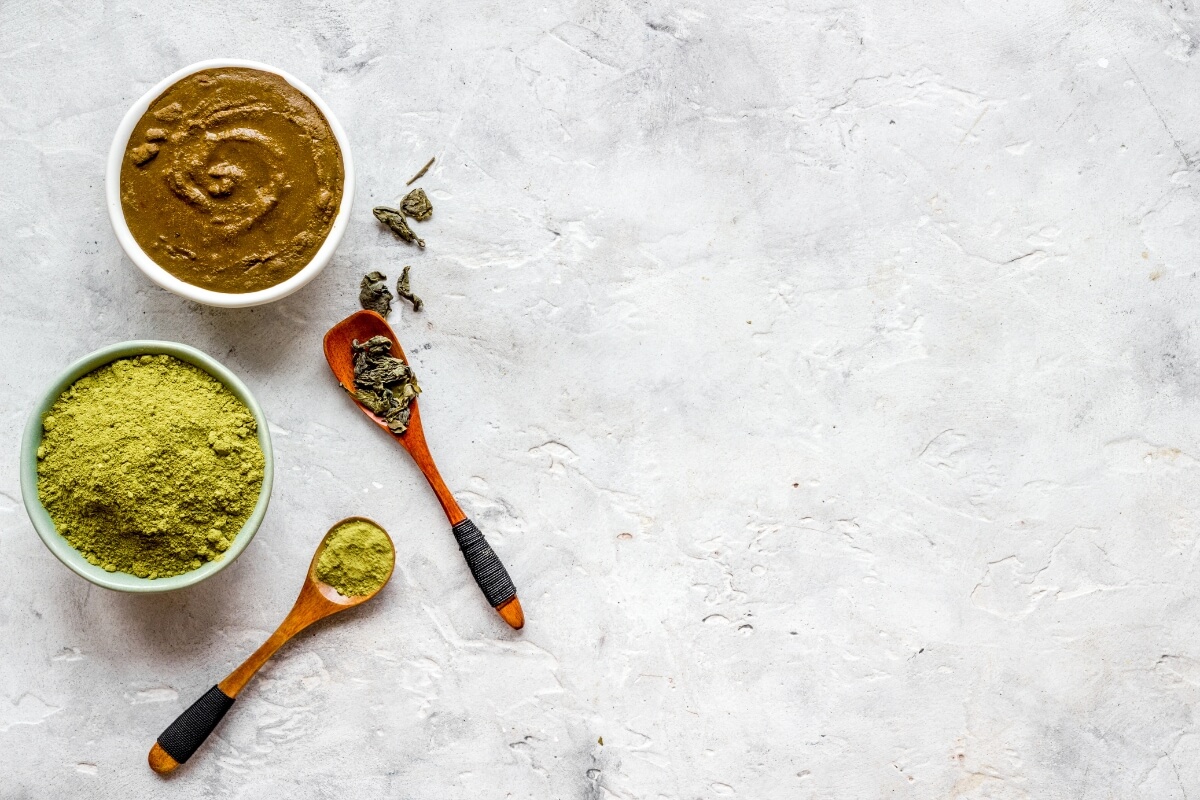
Luckily for allergy sufferers, when it comes to hair dyes, there are some non-toxic, natural, PPD-free, and paraben-free hair dyes. For people allergic to sulfates, henna is one natural option to try.
Undoubtedly, henna is the most widespread go-to coloring solution for both men and women globally. Due to it being nature’s aid for hair coloring, henna is praised as one of the most effective hair colorants even on the most sensitive scalps.
Henna hair dye is a hypoallergenic hair dye (when used in its pure form without additives) that a lot of allergy-prone people use to cover gray hair without any risks. [6]
Furthermore, carrot juice and beet juice are also natural hair dyes that can deliver decent gray hair coverage and enhance your natural hair color.
We have shortlisted some natural remedies to use as a hair dye and what to avoid if you are looking for hair color for sensitive skin. To make sure your scalp won’t get irritated, check for these qualities:
- Ammonia-free.
- PPD-free.
- Hypoallergenic.
- Organic and plant-based.
- Dermatologically-tested.
Natural Hair Dyes
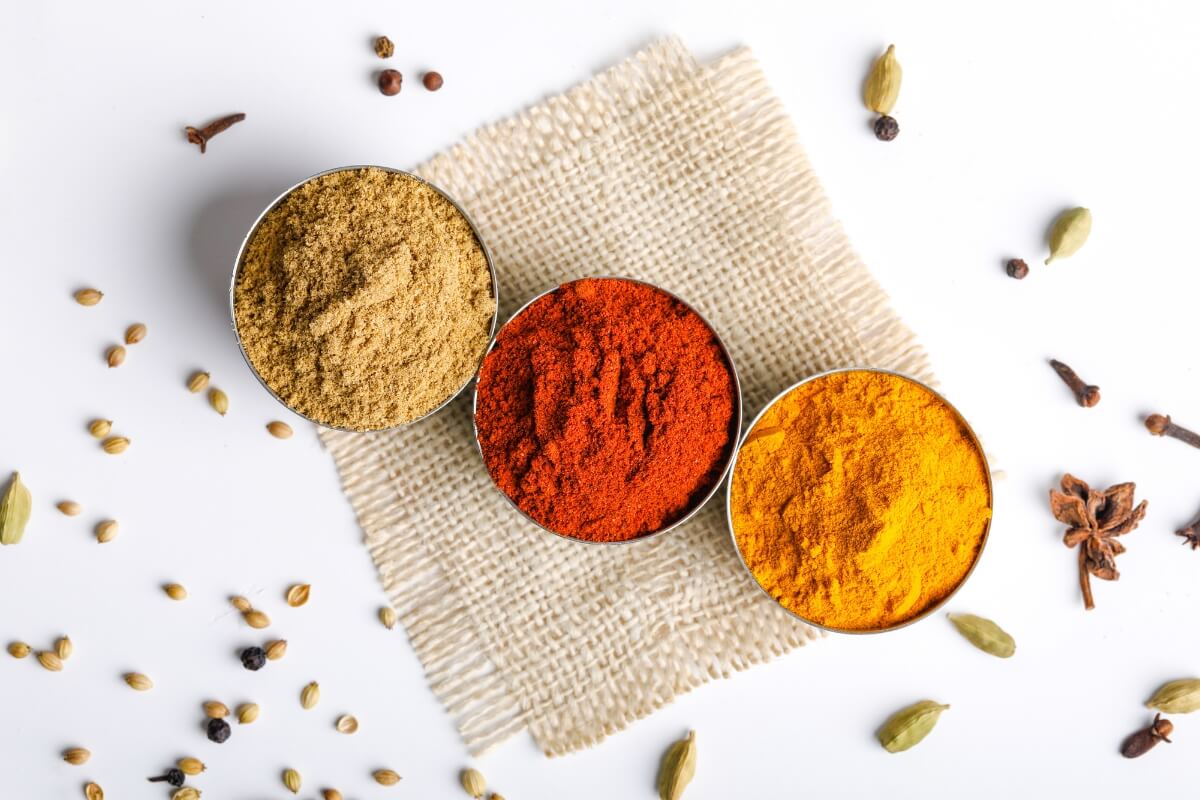
A natural hair dye is free of chemicals, has no artificial fragrance, and uses only botanical ingredients. Henna hair dye consists of organic ingredients, such as the leaves from the henna plant (Lawsonia Inermis).
It’s probably safe to say you already have some ingredients at home that you can use to make a natural hair dye, like carrots and beets, for example. All you need is some of your time and an efficient DIY hair color recipe.
Organic, Plant-Based Hair Dyes
We can not begin to explain how beneficial pure henna can be for your hair. As the ultimate, organic, plant-based, and all-natural hair dye, henna is the go-to choice for individuals that are allergic to hair dye.
As we mentioned, there are some handy natural resources to turn to if you wish to boost the glow in your natural hair color. Plus, if you are looking to simply enhance the vibrance of your hair color, natural hair dyes will do the trick and won’t irritate your sensitive scalp.
Beet juice, carrot juice, coffee, lemon juice, sage, and chamomile tea are nature’s superstars for coloring your hair naturally. For instance, a coffee mask for dark brown hair will enhance the vibrant dark hues.
Moreover, a DIY coffee hair mask will help your locks grow faster and stronger, on top of covering your gray hair.
Hypoallergenic Hair Dyes
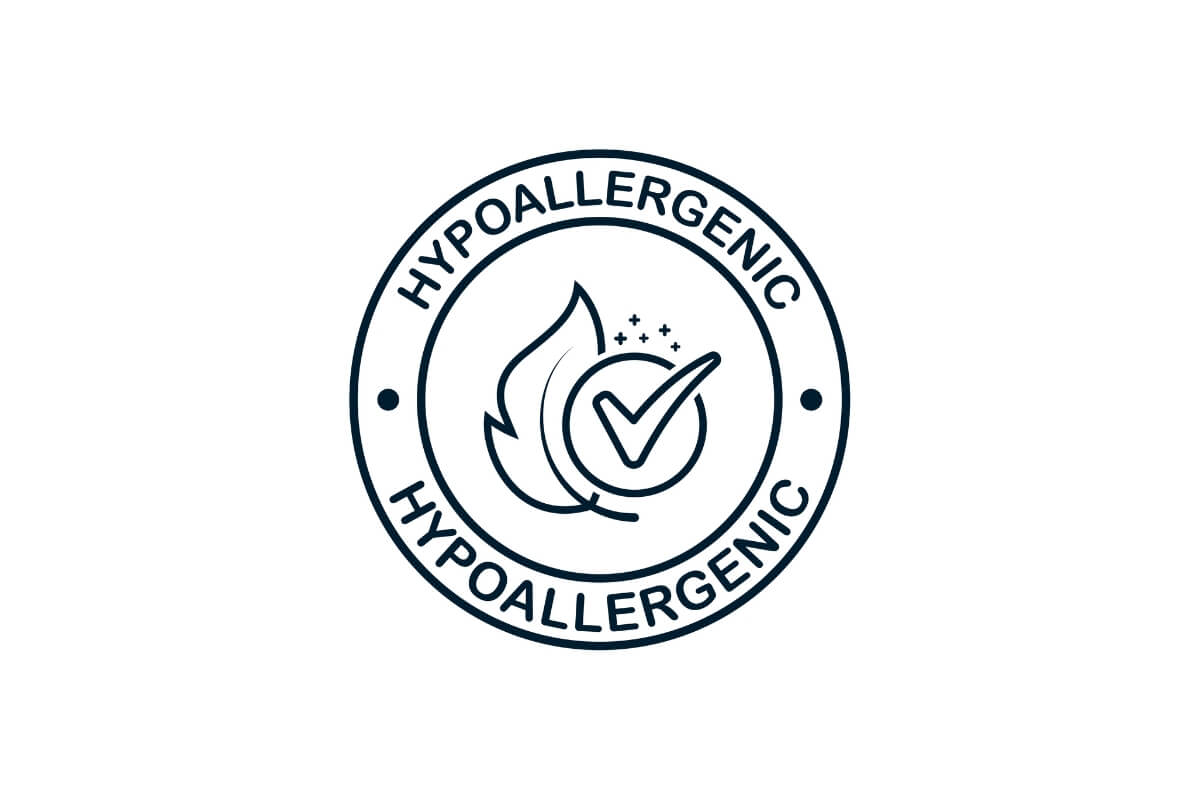
People who are allergic to hair dyes always use hypoallergenic hair coloring products to avoid any allergic reactions. Hypoallergenic hair dyes work better due to their lower concentration of chemicals.
One of the best traits of a hypoallergenic hair dye is its versatility and variety of color options. Whether you want to turn your hair blond or want to try dark brown hues, you can ask your hair stylist for an allergy-friendly hair dye option and rock your favorite hair color risk-free.
Hypoallergenic hair dyes can come in permanent and in semi-permanent hair colors. Which one you choose will depend on your personal choice.
List of Safe Hair Dyes for Allergy Sufferers
For hair color brands to market their product as hypoallergenic, it has to be subdued to extensive clinical trials, allergy testing, and dermatological tests. Without proper accreditations and certificates, a hair dye cannot be labeled as hypoallergenic and safe for allergic individuals.
When deciding on which hair dye to use, you should look for products that have the following qualities:
- PPD-free.
- Sulfate-free.
- Ammonia-free.
- Hydrogen peroxide-free.
- Paraben-free.
- Dermatologically-tested.
- Hypoallergenic.
Note:
It’s very rare and almost impossible to find products that tick all of these boxes.
What you need to do is eliminate as many toxic ingredients as possible and find products that pose the lesser risk. Then patch test to confirm and validate which ones will work for you.
Also seek advice from a Dermatologist if you’re unsure.
Here are the best we’ve reviewed and handpicked so far:
1. Madison Reed Radiant Hair Color Kit
Product Summary
- Permanent hair color.
- Cream formula.
- Gray coverage.
- Multi-tonal.
- Natural-looking results.
Also check: Madison Reed Color Chart.
Pros
- PPD-free.
- 100% ammonia-free.
- Resorcinol-free.
- Parabens-free.
- Pthalates-free.
- SLS-free.
- Gluten-free.
- Titanium-dioxide-free.
- Keratin-enriched.
- Cruelty-free.
- 50+ shades.
Cons
- You can only go 2 shades from your natural color.
- The developer contains Hydrogen Peroxide.
Ingredients:
Cream Color: Water, Stearyl Alcohol, Propylene Glycol, Ethanolamine, Cetyl Alcohol, Ceteareth-25, Cocamide MEA, Toluene-2,5-Diamine Sulfate, Polyquaceteth-2, Ternium-6, Argania Spinosa Kernel Oil, Hydrolyzed Keratin, Panax Ginseng Root Extract, Dimethicone, Palmitic Acid, Sodium Hydrosulfite, Sodium Sulfite, Butylene Glycol, 2-Methylresorcinol, P-Aminophenol, M-Aminophenol, 2, 4 Diaminophenoxyethanol Hcl, 4-Chlororesorcinol, 2-Amino-3-Hydroxypyridine.
Color Activator: Water, Hydrogen Peroxide, Cetearyl Alcohol, Sodium Laureth Sulfate, Propylene Glycol, Dimethicone, Oxyquinoline Sulfate, Pentasodium Pentate, Phosphoric Acid, Tetrasodium EDTA, Etidronic Acid.
The award-winning hair coloring product by Madison Reed is a rich mix of keratin, argan oil, and ginseng root extract. You’ll be able to get the hair color you desire without compromising your health.
The Radiant Cream Color by Madison Reed is a multi-tonal, permanent hair dye. Moreover, it is paraphenylenediamine free, a major plus in the household hair color brands category.
The product is also 100% ammonia-free and made with plant extracts that make it gentle for sensitive scalps if you want to cover gray roots.
This PPD-free hair dye is also free of phthalates, resorcinol, parabens, SLS, and titanium dioxide. In fact, Madison Reed is one of those household names that advocates for chemical-free hair coloring products.
Madison Reed also makes toners, color-glossing creams, and color-depositing conditioners to address all your hair color needs.
The only drawback is that the developer contains hydrogen peroxide. You will have to test it before using.
2. oVertone Semi-Permanent Coloring Conditioner
Product Summary
- Semi-permanent color depositing conditioner
- 15 minutes quick application.
- For all hair types and textures.
- Pastel, vibrant, Extreme, and dark colors.
Also check: oVertone color chart.
Pros
- Vegan.
- No ammonia.
- Paraben-free.
- Sulfate-free.
- Can be used for root touch-ups.
- Contains coconut oil, shea butter, and avocado oil.
Cons
- Fades out fast if you wash your hair daily.
- Contains some preservatives: Benzyl Alcohol, Behentrimonium Chloride, Dehydroacetic Acid.
Ingredients:
Water/Aqua/Eau, Cetearyl Alcohol, Cetyl Alcohol, Stearyl Alcohol, Glycerin, Behentrimonium Chloride, Cocos Nucifera (Coconut) Oil, Organic Butyrospermum Parkii (Shea) Butter, Organic Simmondsia Chinensis (Jojoba) Seed Oil, Persea Gratissima (Avocado) Oil, Oenothera Biennis (Evening Primrose) Oil, Olea Europaea (Olive) Fruit Oil, Sesamum Indicum (Sesame) Seed Oil, Organic Linum Usitatissimum (Linseed) Oil, Amodimethicone, Polysorbate 60, Guar Hydroxypropyltrimonium Chloride, Dehydroacetic Acid, Benzyl Alcohol, Basic Blue 99, Basic Brown 16, Basic Red 76, Basic Yellow 57, Basic Red 46, Basic Violet 1, Basic Yellow 40, Basic Orange 2, Basic Blue 9, Basic Green 4, Basic Violet 2, Citric Acid, Rosmarinus Officinalis (Rosemary) Leaf Oil, Mentha Viridis (Spearmint) Leaf Oil
Coming in a variety of vibrant and pastel colors, oVertone’s conditioner is a well-rounded, hassle-free, and zero-commitment hair coloring solution with no harsh chemicals.
oVertone’s semi-permanent color conditioner can cover most of your gray hair without irritating your scalp, however close you get to the roots. Plus, you won’t be overwhelmed by the traditional hair dye smell since oVertone doesn’t use ammonia in its formulation.
Women and men that are looking for safe hair dyes for covering gray hair use oVertone’s coloring conditioner to preserve the natural oils in their hair and nourish their hair shafts. Because other than a hair dye, it’s also a rich conditioner loaded with nourishing coconut and avocado oils plus shea butter.
3. Herbatint Henna Color Dye
Product Summary
- Made with pure henna powder.
- Dermatologically-tested.
- Vegan.
- Herbatint color chart.
Also check: Herbatint color chart.
Pros
- No PPD.
- 100% USDA organic.
- Non-drying – Made with nourishing plant extracts.
- Alcohol-free.
- Ammonia-free.
- Gluten-free.
- Phthalates-free.
- Paraben-free.
- Resorcinol-free.
- SLS-free.
- Titanium dioxide-free.
Cons
- Limited color options.
Ingredients:
Lawsonia Inermis (Henna) Leaf Powder, Indigofera Tinctoria (Indigo) Leaf Powder, Emblica Officinalis (Amla) Fruit Powder, Ziziphus Spina-Christi (Ziziphus) Leaf Powder, Eucalyptus Globulus (Eucalyptus) Leaf Powder, Aloe Barbadensis (Aloe Vera) Leaf Powder, Curcuma Longa (Turmeric) Root Powder, Chamomilla Recutita (Chamomile) Flower Powder)
Herbatint is an eco-conscious hair brand that pays special attention to the benefits of its hair-dyeing products. Established in 1970, Herbatint uses the wisdom of Ayurveda to help you color your hair naturally. Reaping the benefits of henna, Herbatint delivers visible gray coverage on top of its deeply nourishing qualities.
Herbatint’s color dyes use pure henna and organic ingredients to formulate the perfect mix of colors that won’t irritate sensitive scalps.
People allergic to PPD can have peace of mind knowing that none of it or its derivatives are used to make the dye stick to the hair. The 100% USDA-organic seal makes Herbatint a safe product that can be used in the comfort of your home. Being part of the many natural ingredients known to color hair, henna doesn’t cause an itchy scalp or swelling of the hair shafts.
If you want to temporarily cover your gray hair, but have a PPD allergy, then Herbatint’s 100% organic, plant-based henna hair dye is an excellent choice.
4. Good Dye Young
Product Summary
- Leaping bunny certified.
- Vegan.
- Cruelty-free.
- Salon-grade high-quality pigments.
- 20 colors to pick from.
- Rich and vibrant colors.
- Colors can be mixed.
Pros
- Ammonia-free.
- Formaldehyde-free.
- PPD-free.
- Paraben-free.
- Essential oil fragrances.
- UV protection.
Cons
- Only vibrant colors.
- Contains alcohol.
Ingredients:
Water, Propylene Glycol, Cetyl, Alcohol, Ceteareth-20, Cetearly Alcohol, Stearyl Alcohol, Citrus Bergamia (Bergamot) Oil, Glycerin, Guar Hydroxypropyltrimonium Chloride, Ascorbic Acid, Methylchloroisothiazolinone, Methylisothiazolinone, Rapeseedamidopropyl, Ethyldimonium Ethosulfate, Quaternium-96, Dipropylene Glycol, Propanediol, Cetrimonium, Chloride, Helianthus Annuus (Sunflower) Extract. MAY ALSO CONTAIN: Basic Yellow 40, HC Blue 15, Basic Blue 99, Basic Orange 31, Basic Red 51, Basic Violet 16, Basic Violet 2, Basic Yellow 87, Basic Blue 77, CI 20470, CI 26100, CI 61565, Disperse Black 9, HC Blue 2, HC Red 1, HC Yellow 4.
This 2022 Best of Beauty Award Winner by Allure is the preferred hair dye choice for the global audience. With no parabens, ammonia, peroxide, or phthalates in the formulation, Good Dye Young boasts a wide range of vivid hair colors to transform your hair without worrying about harsh chemicals or developing a severe allergic reaction.
These semi-permanent hair dyes are the perfect choice for people prone to allergic reactions and sensitive skin. Plus, the incorporated UV protection in the formulation helps your hair attain its color regardless of excess heat or other weather conditions.
The Good Dye Young semi-permanent hair dye works on all hair types, thick hair, curly hair, or fine hair. Moreover, due to it being cruelty-free and vegan, the Good Dye Young hair dye is a non-toxic, safe hair dye for allergy sufferers looking to temporarily switch their hair color without compromising the natural hair texture.
Due to Good Dye Young using natural ingredients like sunflower oil, your hair will feel silky, light, and nourished.
5. Manic Panic Hair Dye
Product Summary
- 22+ shades.
- Best applied to pre-lightened hair.
- Tested on humans, not animals.
- High-voltage hair colors.
Also check: Manic Panic color chart.
Pros
- Contains protein complex to fortify hair.
- High-voltage, amplified, supernatural, and professional tones.
- Peta-accredited.
- PPD and ammonia free.
- Smells like candy.
Cons
- Fades fast.
- You need light hair colors.
Ingredients:
Water/Aqua (Purified Water, Agua Purificada, Eau Épurée), Cetyl Alcohol, Stearyl Alcohol, Ceteareth-20, Propylene Glycol, Aloe Vera (Aloe Barbadensis Leaf Juice), Citric Acid, Methylchloroisothiazolone, Methylisothiazolone, Basic Violet 16, C.I. 50240, C.I. 42600.
Free of allergy-triggering ingredients like para-phenylenediamine, ammonia, resorcinol, phthalates, and parabens, the Manic Panic hair dye is another superb, hypoallergenic hair dye. People with sensitive scalps can enjoy their favorite hair color without worrying their scalp will saturate with flakes, residue, or other harmful buildups.
Being a PPD-free hair dye, people that are allergic to such chemicals can rest assured that by using Manic Panic’s hair dye, their skin sensitivity won’t suffer a blow every time they try to change the natural color of their hair.
Manic Panic is one hair color brand that adopts a cruelty-free way of testing its products. Plus, its vegan formula assures clients their hair won’t get damaged.
Moreover, the unique formulation allows the hair dye to act as a restoring conditioner that helps hydrate and boost fine hair volume. The beeswax and hops extract in Manic Panic’s hair dye will cover your gray hair while also bumping up moisture.
Permanent Hair Dyes Without PPD, Ammonia, and Peroxides?
Permanent hair dyes last a lot longer and are more resistant to washes. To deliver this type of long-lasting color, often such products use p-phenylenediamine (PPD) and other alkaline chemicals to open the hair cuticles and deliver dye pigments deep into the cortex.
If you see a permanent hair color product that claims to be free of such ingredients, be cautious and check the label carefully.
Many hair dyes are made with a combination of chemicals in order to create the desired color and longevity, and it is difficult to create a hair dye that is both permanent and safe. Only the Madison Reed Radiant Hair Color Kit comes close, but the caveat is, it contains hydrogen peroxide in its color activator.
So watch out for name synonyms of these chemicals and ask questions o the manufacturer to fully disclose all ingredients if you’re not sure.
It’s better to be safe than sorry.
Best Ammonia-free Hair Colors to Cover Gray Hair
Light Mountain Natural Color The Gray
Product Summary
- 100% plant-based.
Pros
- Includes complete application kit.
- 8 Colors.
- No synthetic chemicals.
Cons
- Takes too long to work.
- Can be drying.
Ingredients:
Indigoferae tinctoria (indigo) leaf powder, Lawsonia inermis (henna) leaf powder. Certified Organic.
Read the safety Information for eyelashes, eyebrows, beards, and mustaches. Do not use on cuts and wounded skin.
This 100% pure botanical coloring product contains no artificial fragrance; most importantly, it’s paraphenylenediamine-free. Coming in 8 color variations, it offers a safe option to cover gray hair for those with sensitive scalps who need more than just a boring black shade.
The potency of the botanicals included in the dye, such as Indigo leaf and henna leaf, ensures an allergy-free dyeing experience without irritating your scalp.
Everprobeauty Gray Away Root Touch Up Quick Stick
Product Summary
- Crayon stick.
- Disguises gray and white hair.
- Not long-lasting.
Pros
- The color blends to match your existing hair color.
- Target gray roots in minutes.
- Adds depth to white hair.
Cons
- The root concealer spray contains some alcohol.
Ingredients:
C12-15 Alkyl Benzoate, Tapioca Starch, Polyethylene, Tribehenin, Octyldodecanol, Silica, Polymethylsilsesquioxane, Water (Aqua), Disteardimonium Hectorite, Isopropyl Titanium Triisostearate, Triethoxysilylethyl Polydimethylsiloxyethyl Dimethicone, Triethoxysilylethyl Polydimethylsiloxyethyl Hexyl Dimethicone, Simethicone, Tin Oxide, Propylene Carbonate, Caprylyl Glycol, Mica, Iron Oxides (Ci 77499), Titanium Dioxide (Ci 77891), Iron Oxides (Ci 77491), Iron Oxides (Ci 77492).
Here’s a hair coloring product that’s specially developed for root touchups. So, if you don’t want to color all of your hair and only focus on the grown-out grays, Everprobeauty is the product for you.
The product does not contain ammonia, making it ideal for people with sensitive scalps. Moreover, no peroxide, synthetic dyes, sulfates, or parabens make this root touch-up product a suitable option for allergy-prone people.
Furthermore, the handy stick-like design makes it easy to handle and apply the color to your grown-out grays. Plus, it’s a cost-efficient variant that’ll keep the gray away from your hair.
Homemade Hypoallergenic Hair Dyes to Try
If you want to dye your hair naturally, you’ll be happy to know you won’t have to leave the comfort of your home to achieve the result you are after. In fact, there are countless DIY hair treatment recipes that you can do with some basic ingredients you have at home.
Lemon, beets, honey, and coffee are some of nature’s aids that can help your hair color transform naturally. Henna is the go-to choice for at-home hair care if you want a permanent hair color.
We found some useful DIY remedies for hair color transformation without harmful chemicals. Whether you are looking to lighten your blonde locks or darken your lush brunette hair, we got a recipe just for you!
Rosemary Oil Saves the Day
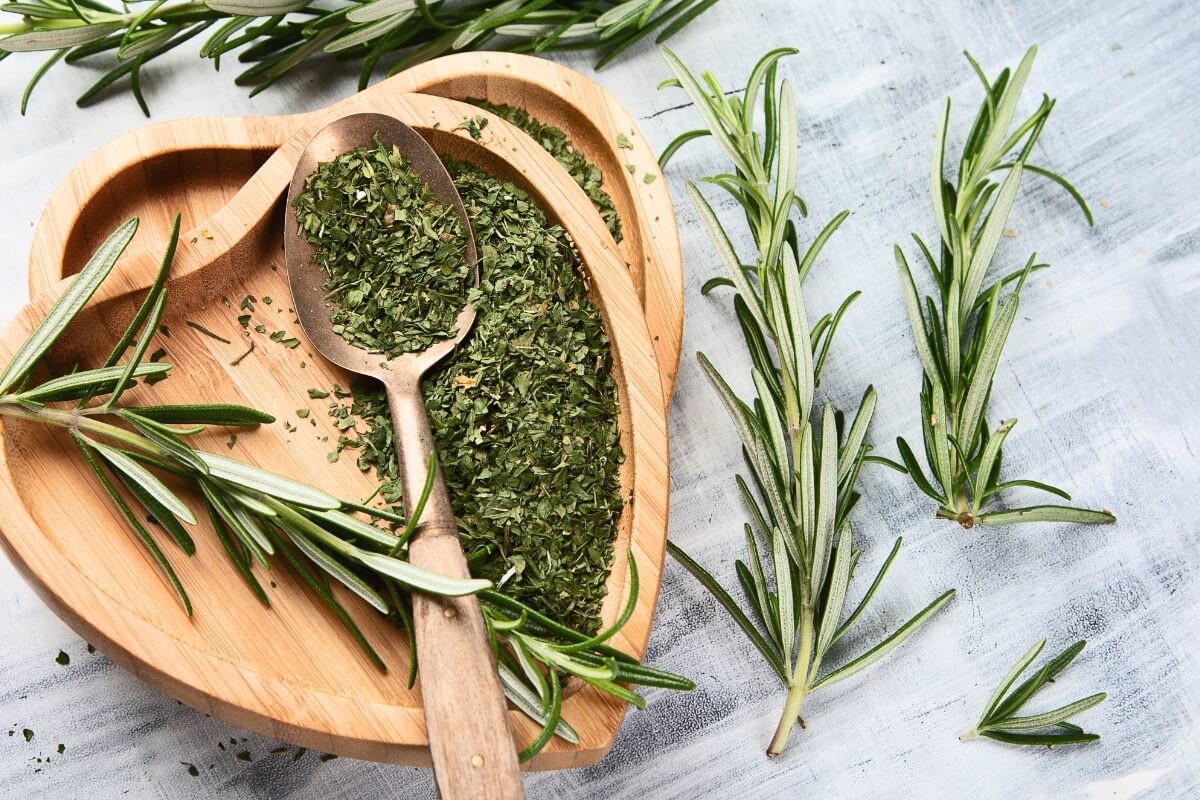
If your hair has lost its joie de vivre, it might be because of product buildup making your hair color look dull and trashy. Hairsprays, gels, and all sorts of hair products can cause residue that stays on your hair follicles and renders them heavy and oily.
Rosemary oil is one natural remedy you can try to remove products from your locks efficiently. Moreover, this essential oil can help maintain your hair color if you’ve recently dyed it.
Try it, and it may save you from another salon trip for a re-touch.
How to use it:
Mix rosemary oil with apple cider vinegar and apply the combo on your locks. Leave it to sit for 10 to 15 minutes and rinse. Your hair will look and feel clean, flowy, and free of product build-up. You can use this treatment twice a month.
When Life Gives You Lemons, Use Them for Your Hair!
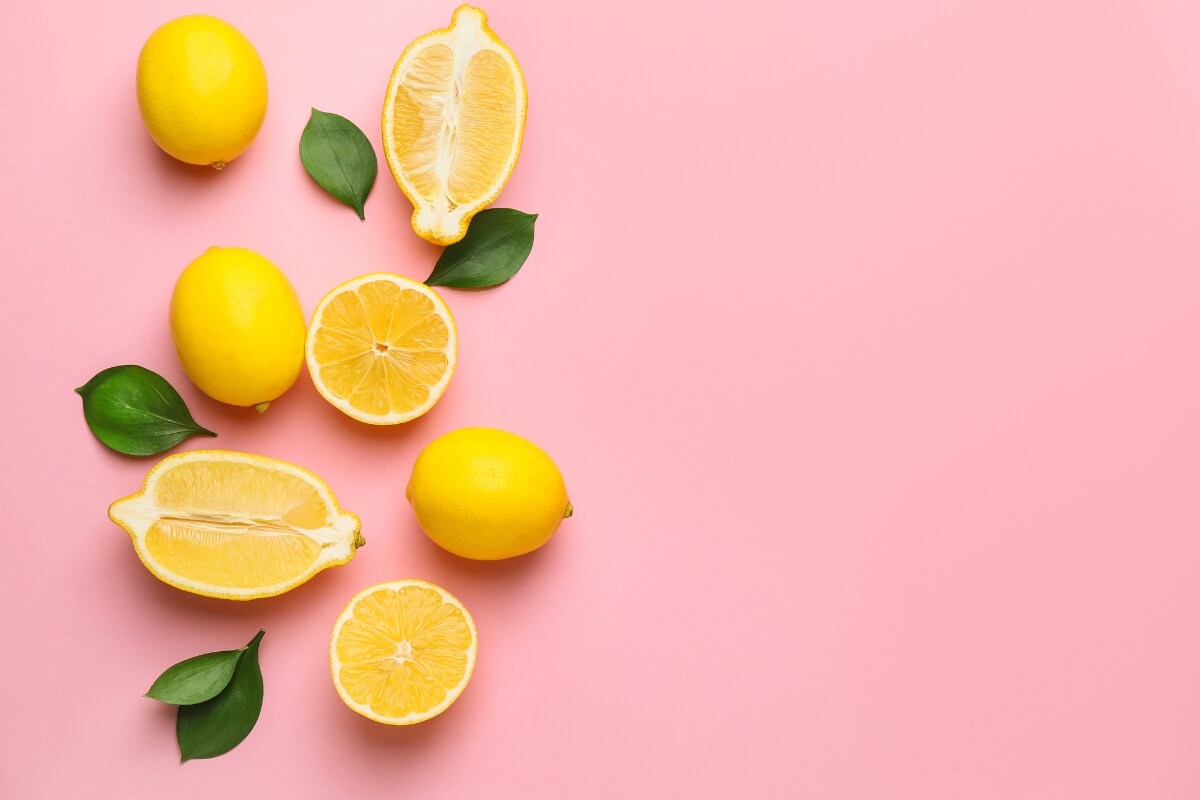
If you want to lighten the color of your locks, there’s no better natural lightener than lemon. Lemon juice will do the trick if you want to get rid of the orangy hues in your hair or brighten up your deep brown locks.
How to use it:
Use 2/3 of warm water and 1/3 of lemon juice. Wet your hair and apply the mixture generously. Let it sit for 1 to 2 hours, and rinse it off.
Just make sure you avoid sunlight and moisturize your hair well afterward.
Dyeing Hair With Coffee!

Besides invigorating your hair, a cup of coffee can also replenish the vibrance of dark locks. Since dark colors tend to lose their vividness over time and fade away, you would need a quick fix to restore your mane’s lush color.
How to use it:
Brew a few cups of espresso or your favorite dark roast. Double the amount of coffee you would regularly use and let the batch cool off. After it has steeped, mix the coffee with your regular conditioner and apply as per usual. Leave it to cure for an hour. Lastly, rinse the conditioner off and see your locks transform to a darker shade.
Burnt Cinnamon Red Hair Color Anyone!

Cinnamon is another pantry entry that made our list as a well-rounded natural hair lightener. Not many people know this, but burnt cinnamon can.
How to use it:
Add 2 to 3 spoonfuls of burnt and gound cinnamon to your regular conditioner and apply the mix to your hair as you would normally do. Let it sit for 45-60 minutes. Then rinse your hair. Darker colors might need a few tries before seeing noticeable results.
Frequently Asked Questions
If you’re an allergy sufferer, you are probably always on the lookout when it comes to applying products to your sensitive skin. Hair dye-wise, we get a ton of questions regarding the safety of hair dyeing products and whether you can use them.
I have a sensitive scalp. Can I still dye my hair?
You can. There are particular hair dyes that are safe for allergy sufferers. Do a skin test first and see whether your skin reacts to the ingredients. If anything happens to your skin – give it up. If your skin looks the same as before you applied the product – color away!
What ingredients can harm my scalp?
Ammonia, sulfates, and p-phenylenediamine (PPD) are the most commercially widespread hair dye components known to trigger allergic reactions.
How can I tell I have a hair dye allergy?
If the rim of your ear starts to flake, your forehead starts itching, or your eyelids, you can be certain you are experiencing an allergic reaction to your hair dye.
Can I use henna hair dye to change my natural color?
Of course. Henna is the preferred hair-coloring option for many women and men looking to naturally alter the color of their locks. You can use henna if you’re allergic to traditional dyeing ingredients. Using henna will give you permanent hair color, naturally.
But make sure it’s a purely plant-based product. Not once with other synthetic additives.
Final Thoughts
Many brands are now championing clean beauty and non-toxic products that are totally safe for anyone.
Next time you pick a box of hair dye, read the ingredients list on the back and try to identify the toxic ingredients.
I recommend using the INCI Decoder website, paste the ingredients list and it explains in plain and simple language what each ingredient does. It also flags up the bad ones you should avoid.
Steer clear from hair colorants containing ammonia, p-phenylenediamine, sulfates, peroxide, and other known allergy triggers. Look for plant-based products or colorants using only natural ingredients and essential oils.
And lastly, avoid permanent hair dyes.
We’ve scoured the whole internet to find one that did not have any nasties, and we found zilch!
Stick to semi-permanent dyes. Since they don’t need to create chemical reactions to infuse color, they are the safer options for those who are prone to allergies.
References & Citations
- Hair Dye Ingredients and Potential Health Risks from Exposure to Hair Dyeing
Lin He, Freideriki Michailidou, Hailey L. Gahlon, and Weibin Zeng
Chemical Research in Toxicology 2022 35 (6), 901-915
DOI: 10.1021/acs.chemrestox.1c00427. - Allergy to paraphenylenediamine
Vanessa Ngan, Staff Writer, 2002. Updated by Dr Jannet Gomez. August 2018. DermNet NZ Editor in Chief: Adjunct A/Prof Amanda Oakley, Dermatologist, Hamilton, New Zealand. Copy edited by Gus Mitchell. - Allergy to hair dye. PPD ban.
McFadden JP, White IR, Frosch PJ, Sosted H, Johansen JD, Menne T. Allergy to hair dye. BMJ. 2007 Feb 3;334(7587):220. doi: 10.1136/bmj.39042.643206.BE. PMID: 17272532; PMCID: PMC1790769. - Fatal anaphylactic reaction to hair dye.
Belton AL, Chira T. Fatal anaphylactic reaction to hair dye. Am J Forensic Med Pathol. 1997 Sep;18(3):290-2. doi: 10.1097/00000433-199709000-00012. PMID: 9290878. - Adrenaline in the Acute Treatment of Anaphylaxis.
Ring J, Klimek L, Worm M. Adrenaline in the Acute Treatment of Anaphylaxis. Dtsch Arztebl Int. 2018 Aug 6;115(31-32):528-534. doi: 10.3238/arztebl.2018.0528. PMID: 30149833; PMCID: PMC6131363. - A Review of the Natural Resources Used to Hair Color and Hair Care Products
Z. Shahi, M. Khajeh Mehrizi * , M. Hadizadeh Assistant Professor, Textile Engineering Department, Yazd University, Yazd, Iran.
About the Author
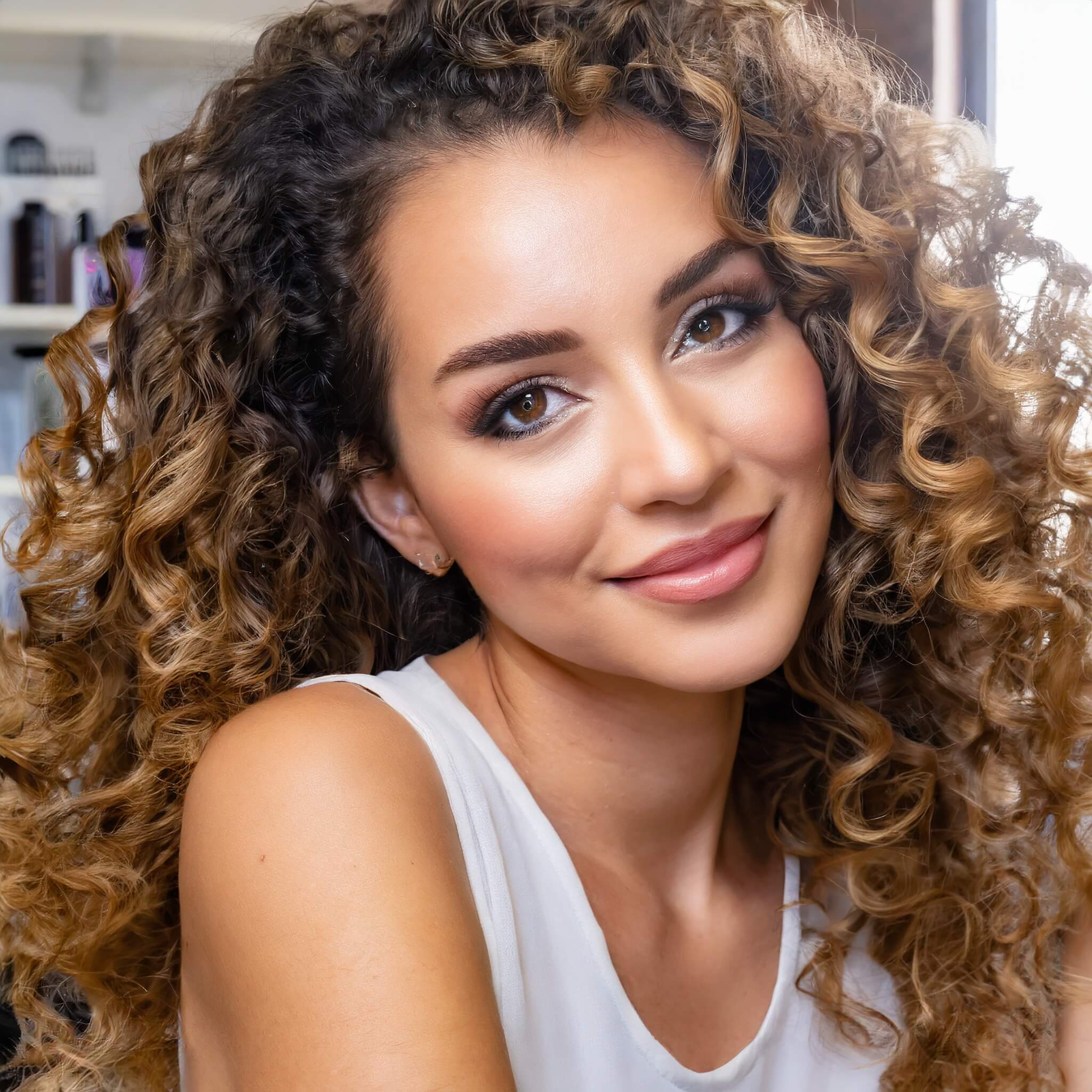 Camelia Smith
Camelia SmithCamelia Smith can color hair, perform keratin treatments, bleach hair, and even cut curly hair. She is our go-to person whenever we have hair treatments and styling questions.
She's also currently training as a freelance makeup artist and is passionate about helping others feel beautiful in their skin. When she's not writing or doing hair, she's usually spending time watching British period dramas.






